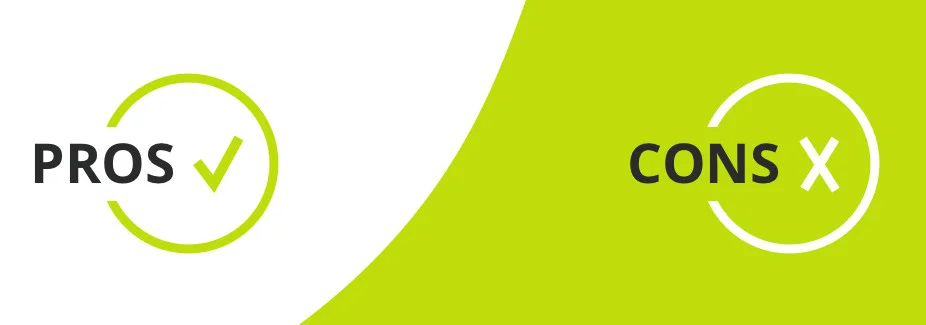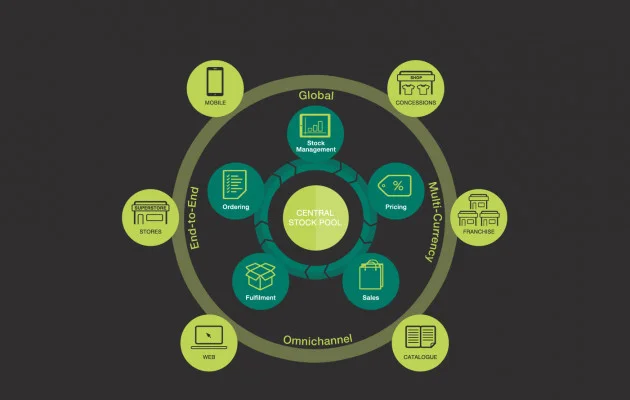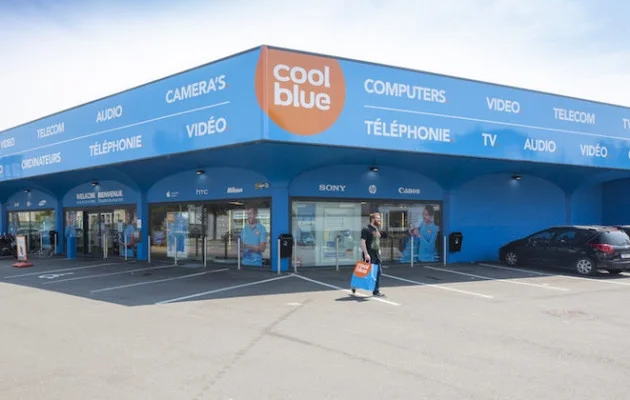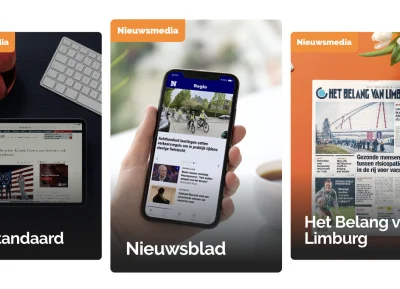

The retail landscape has changed profoundly. Traditional brick-and-mortars (physical stores) are struggling, as evidenced by the vacancy rates in city centers. While e-commerce has been able to record solid growth for years. Many traditional retailers want to jump on this trend and are converting to bricks-and-clicks, a combination of physical and online sales channels.
They are combining offline and online to continue to appeal to customers young and old, progressive or rather classic. They are trying to stay relevant. But how do you stay relevant? And how do you appeal to both online shoppers and conservative customers?
Omnichannel
It's already in the name, but nevertheless we will briefly go into the definition: a company that is omnichannel is basically present on all channels where its target audience is. Online or offline, it always communicates in a uniform way. An omnichannel strategy is a strategy that combines and frames the strategies of the different channels. It sets the outlines for its components and helps ensure uniformity.
Omnichannel not only means that you communicate uniformly, but that you are. So prices, products and services are the same through all channels and these channels also work together. You want to create a synergy (#buzzword) between the different channels.
Multiple touchpoints
The pattern of the average customer has not necessarily changed, but it has become somewhat more complex. For example, a typical customer will still search for information through a need, gather and evaluate possible solutions and then finally choose a solution based on individual criteria. The more complex part is in how customers go through the steps. They no longer do this only through word-of-mouth, a newspaper article or with a visit to the local merchant. No. Now there are social media, influencers, trade forums and other online channels.
This does not mean that physical stores and print ads are redundant, but they can be another interpretation, another added value, to the omnichannel strategy. According to Comeos (2019) , 79% of Belgians purchased online in 2018. 48% of all Belgians buy something online at least monthly. It is therefore important for companies to be and communicate online as well.
It is important to guide the consumer to your solutions in every part of his/her decision-making process. Regardless of where this customer is going to look for or buy information. You can perfectly see something in the store and proceed to a purchase online (showrooming). It is also possible to see an advertisement online, see this same product in a brochure and then make the purchase in a physical store or an online store. In short, make sure you have a touchpoint with the consumer wherever they are.

E-commerce and Omnichannel
It is not only the classic retailers that have to think onmichannel, also the pure players (companies that only sell products or services through a webshop). Indeed, they are losing customers to the more conservative shopper who likes to try on, feel and experience products before proceeding to purchase. In Comeos' (2019) survey, 34% of respondents indicated that they want to experience the product before buying it.
In addition, pure players also cannot reach all consumers through online channels. Especially conservative consumers like personal advice. Face-2-face. Or like to read leaflets and flyers again to score the best deals. Even though they have also seen your products and services through Facebook or a Google Display ad. Even with the more conservative consumer, you need to have multiple touch points, both offline and online.
Omnichannel strategy: how do I get started?
START WITH YOURSELF
It sounds strange, but your company must be ready to take the omnichannel step. Does your company look at its target audience with an open mind? Are you ready to make changes in processes and flows? Are you sufficiently customer centric? Because consumers quickly sense when an omnichannel strategy is not supported. Inconsistent communication, poor referencing between the store and the web shop and hostility from store staff towards the web shop can be experienced as a barrier. And that's something you want to avoid.
KNOW YOUR TARGET GROUP
If you can map out how your target group, your customers, move through the online and offline world, you are off to a good start. You can figure out which channels can carry which message. If you appeal to young people, try online via Instagram. Reach parents earlier, a combination of print and Facebook ads can help you. When doing this, also consider the devices they use.
- What percent of customers regularly use a smartphone?
- In a physical store, what percent of the target audience also wants to be able to order online?
- Is it an added value for the customer to be able to find the full assortment offline in the physical store?
- et al.
In short, map the customer journey.
COMMIT TO EXPERIENCE.
What you want to achieve in an omnichannel strategy is a unified brand experience. A customer can buy your product through an app, a website or in a store without really experiencing a difference. The channels are connected, aligned. In a physical store, you can enjoy the same discounts as online. Or, in the physical store you can go with your online purchases. A good experience in one channel contributes to a positive feeling to the other channels. It has a halo effect.
Benefits:
- Clarity for the customer;
- Convenience for the customer;
- More online conversions;
- Same quality service for the customer;
- Multiple channels with the same experience;
- Growth potential and future-proofing your business;



What do I need to consider?
No change in strategy comes without a struggle. There are always pain points that need to be addressed, often ad hoc. That's why we include some points to consider when creating an omnichannel strategy that integrates e-commerce into your existing operations:
- It involves major changes in business operations;
- It requires additional efforts from customer service;
- There are investment costs for integrated systems, returns and others;
- Guard against profitability. It is best not to have price differences by sales channel, while costs may vary.
Some omni-channel cases
FROM AN E-COMMERCE BACKGROUND: COOLBLUE
Coolblue is originally an Internet company. The company became a success story by offering customer service at reasonable prices. Coolblue turned the retail world upside down with Sunday deliveries, return rights, home service for installing household appliances all from the comfort of your couch, among other things. As a result, a lot of traditional businesses are experiencing competition for their physical stores. And the reactions are varied: stubbornly stick to old mantras (and go under) or adapt and switch to a “clicks and bricks” model.
The streetscape has also changed as a result of stubbornly refusing customer desires (easy online shopping). Coolblue surprised friend and foe by opening physical stores alongside its online operations. Coolblue realizes that a lot of customers see a physical retail outlet as an (omni-channel) plus. This improves the experience of the rather conservative, Belgian customer and for Coolblue it means an increase in sales.
FROM A PHYSICAL LOCATION BACKGROUND: DELHAIZE
Delhaize is a Belgian supermarket chain and has been around for more than 100 years. So we can really speak of a traditional supermarket chain with no e-commerce experience. Delhaize did, however, always focus hard on customer experience in the store and beyond. This was evident again when Delhaize put their e-commerce platform live. Ordinary consumers can now easily select their favorite products and have them delivered to their door. This means added value for hardworking customers who work long hours and are home late. Now these customers no longer have to rush to a physical location to enjoy the same authentic products and experience of Delhaize!
Is your online store suitable for omnichannel marketing?
Unsure if omnichannel e-commerce is right for your company or business model? Contact us and we'll help you map out the effects and benefits!
Our references




